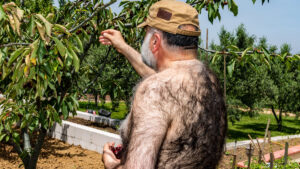Aussie farmers want AgTechs to help build a $100bn market by 2030

Sensera's technology is used to track cattle. Pic: Getty.
Australia rode to prosperity on the sheep’s back in the early 20th century.
Now a wave of agricultural technology (or AgTech) companies are hoping to turbo-charge those sheep — metaphorically speaking — to regain Australia’s agricultural mojo.
The National Farmer’s Federation (NFF) wants to double Australia’s farm production to $100 billion by 2030 — and is encouraging the use of AgTech to attain that lofty goal.
This year farm gate output will total $59 billion – meaning it needs to grow 70 per cent in the next 12 years.
Last week Prime Minister Malcolm Turnbull launched Talking 2030: Growing agriculture into a $100 billion industry — a strategy paper put together by the NFF and consultant KPMG to address that challenge.
“Agriculture is our future. It’s often seen as being an old-fashioned industry and it has been around a long time, as long as civilisation — but it is technologically advanced, and becoming more so,” Mr Turnbull said.
“It’s all about being able to better use our resources – whether it’s water, whether it’s pesticides for spraying weeds — and to be able to do so with precision and making every drop count.”
Blockchain, Internet of Things and robot fruit-pickers
The KPMG paper calls for technological advancement in areas as diverse as automated global trade compliance, water management via Internet of Things networks and digital supply chains that connect consumers and producers using blockchain technology.
Even robotics will play a part. Robotic fruit picking machines — set to become available this year — could be part of a $7.4 billion global market for agriculture robots in five years, the report says. Agricultural drones add another $3.7 billion.
But solving the simple equation of producing more food for more people may represent the biggest challenge — and the biggest potential profits for AgTech plays.
“The planet must produce more food in the next four decades than all farmers in history have harvested over the past 8000 years,” the report says. “That is because by 2050, the Earth will be home to as many as 10 billion people, up from today’s 7.5 billion.”
There is “a clear trend of sustainable intensification of food production in Australia as a clear enabler towards the $100 billion target”, the report says.
The appetite of governments, investors, entrepreneurs, researchers, corporates and farmers for new yield-enabling technology is very strong, says KPMG’s Head of AgTech, Ben van Delden.
“Our farming systems need to dramatically evolve to produce more food using less land and resources,” Mr van Delden says.
In total, new technology could unlock $20.3 billion in gross value for agricultural production, the report finds.
Here are five ASX-listed small cap stocks that are well-placed to benefit from the trend to AgTech:
Hybrid plant breeder Abundant Produce (ASX:ABT) is focused on developing high-yield seeds for “a range of food crops that can be grown under non-ideal conditions, particularly greenhouse vegetables, such as cucumbers and tomatoes.”
The group is developing intellectual property in plant science to make sweeter tomatoes and juicier cucumbers in a partnership with scientists from the University of Sydney.
Abundant has also been dabbling with vegetable-based skincare ranges.
Israeli-based AgTech Roots Sustainable Agricultural Technologies (ASX:ROO) has developed technology that heats or cools crop root zones to grow crops at their optimal temperature year-round.
A trial with basil saw an increase in yield by 66 per cent when the root zone was heated, compared to plants that were untreated. Average plant size grew by more than a third.
CropLogic (ASX:CLI) offers crop-management–as-a-service, initially targeting potato crops.
It uses equipment, based on technology developed by the New Zealand Institute for Plant and Food Research, such as probes that collect data on soil temperature and moisture as well as aerial imagery help farmers to better manage crops.
The in-field probes “provide underground information that allows early detection of plant health issues and better yield prediction ability”.
Sensera (ASX:SE1) makes Internet-of-Things chips that are tagged to the ears of cattle to transmit data.
The Micro Electro Mechanical Systems (or MEMS) chips are miniature electro-mechanical devices used to measure things like temperature, pressure, chemicals, radiation or location.
The chips and recently acquired location awareness platform Nanotron, mean Sensera owns the medium through which data is collected and transmitted.
Antara Lifesciences (ASX:ANR) is looking to treat pig’s diarrhoea — among other things.
It’s aiming to address the problem of increasing antibiotic use in animals, which can lead to infectious diseases resisting antibiotics or the creation of so-called “super bugs.”
The company’s lead product Detach is already clinically proven to be effective in treating Scour – a gastro-intestinal disorder in pigs — and has already had such success it was named as a potential M&A target by advisory firm Wilsons earlier this year.
| ASX code | Name | Market Cap | 12-month price change | Price Mar 27, 2017 | Price Mar 27, 2017 |
|---|---|---|---|---|---|
| SE1 | SENSERA | 39.32m | -36% | 24 | 0.38 |
| ABT | ABUNDANT PRODUCE | 20.86m | -26% | 40 | 0.52 |
| ROO* | ROOTS SUSTAINABLE | 26.84m | 125% | 45 | 0.2 |
| CLI* | CROPLOGIC | 6.16m | 75% | 5 | 0.2 |
| ANR | ANTARA LIFESCIENCES | 76.6m | 29% | 155 | 1.2 |
** denotes listing price comparison
UNLOCK INSIGHTS
Discover the untold stories of emerging ASX stocks.
Daily news and expert analysis, it's free to subscribe.
By proceeding, you confirm you understand that we handle personal information in accordance with our Privacy Policy.








